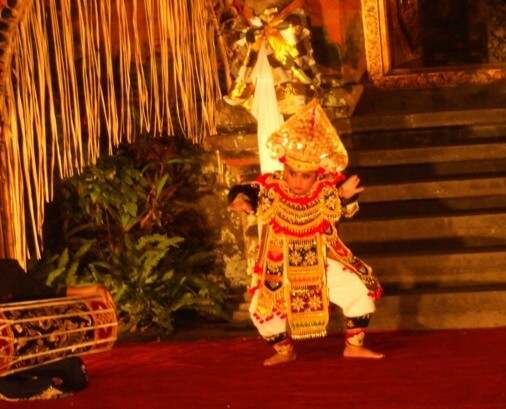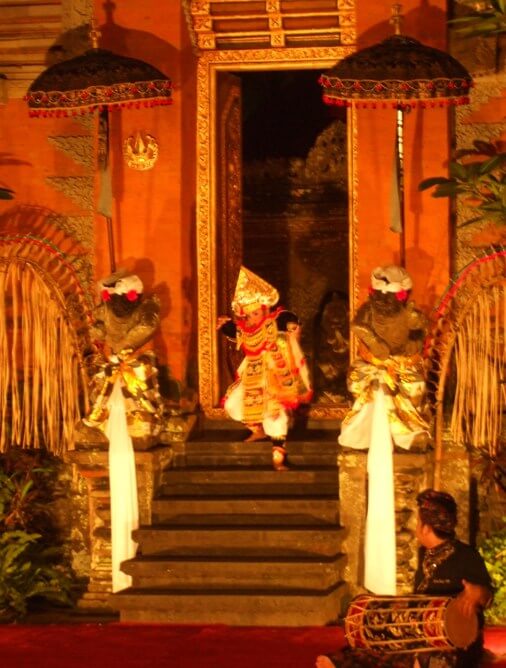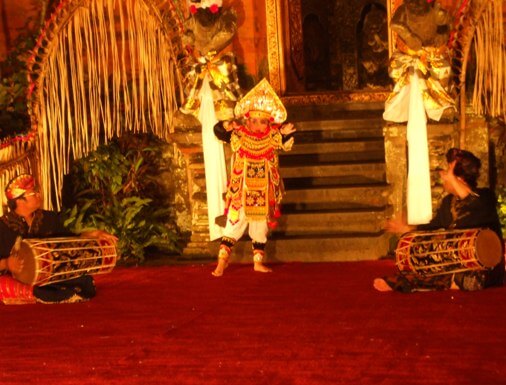Baris Tunggal Dance or Tari Baris Tunggal Bali was created in the early 20th century. This dance is usually performed as the opening dance for the secular show and sometimes as the lead figure in the dance-drama. Baris Tunggal or Solo Warrior dance is always performed by a young boy, occasionally by a young girl.
Movements in this dance tell the toughness of Balinese soldier at that time. The dance movement is steady, firm, energetic and dynamic, accompanied by eye movement (sledet) which constantly changing. This reflects the nature of a soldier who is aware of the situation around him.
The Baris dance itself has no less than 30 variations of dance and has been performed by the Balinese up until now. The word "baris" is derived from "bebarisan" which means "line". Baris dance probably originated as a symbol of the soldiers in protecting the king in the kingdom.
Baris dance is estimated to have been around since the mid-16th century. It is mentioned in the ancient Javanese poem "Kidung Sunda" (1550 AD). Mentioned that there are seven types of Baris dance, performed at cremation ceremonies in East Java.
Costumes and makeup can be a characteristic of a dance. This also applies to the Baris Tunggal, the costumes are beautiful, harmonious and colorful. Dancers use a headdress or "gelungan", triangular shaped with ornaments made of shells, completed with red flowers.
Dancers wearing velvet or "beludru" and white leggings or "celana". A pair of cover or "stewel" worn on the ankle and a pair of bracelet (gelang kana) on the wrist.
Around the torso is adorned by long-small fabric panels, known as "awiran", which hang from the body. Another larger panel called "lamak” is fixed to the chest. A circular collar known as "badong" is worn around the neck. The costume is completed with "keris", a traditional weapon, which is tucked neatly in the back of the dancer.
This costume looks a bit loose and hanging down. At the time of dancers doing the twist movement, the costumes (especially the awiran and lamak) will expand and give dramatic effects on the choreography that performed. It's beautiful and awe-inspiring to the viewer!
Reference
- google.co.id
- wikipedia.org _ Baris(dance) _ on March 8, 2017
https://en.wikipedia.org/wiki/Baris_(dance) - wikipedia.org _ Balinese Dance _ on March 8, 2017
https://en.wikipedia.org/wiki/Balinese_dance - wikipedia.org _ Music of Bali _ on March 8, 2017
https://en.wikipedia.org/wiki/Music_of_Bali - Dibia, I Wayan; Ballinger, Rucina (Nov 27, 2012). "Balinese Dance, Drama & Music: A Guide to the Performing Arts of Bali". Tuttle Publishing. Accessed on March 7, 2017.
- Image : Original Collection
Searches on this site related to Baris Tunggal Dance:
1. Tani Dance
2. Tenun Dance
3. Panyembrama Dance
4. Sekar Jagat Dance
5. Teruna Jaya Dance
6. Legong Kraton Dance



No comments:
Post a Comment